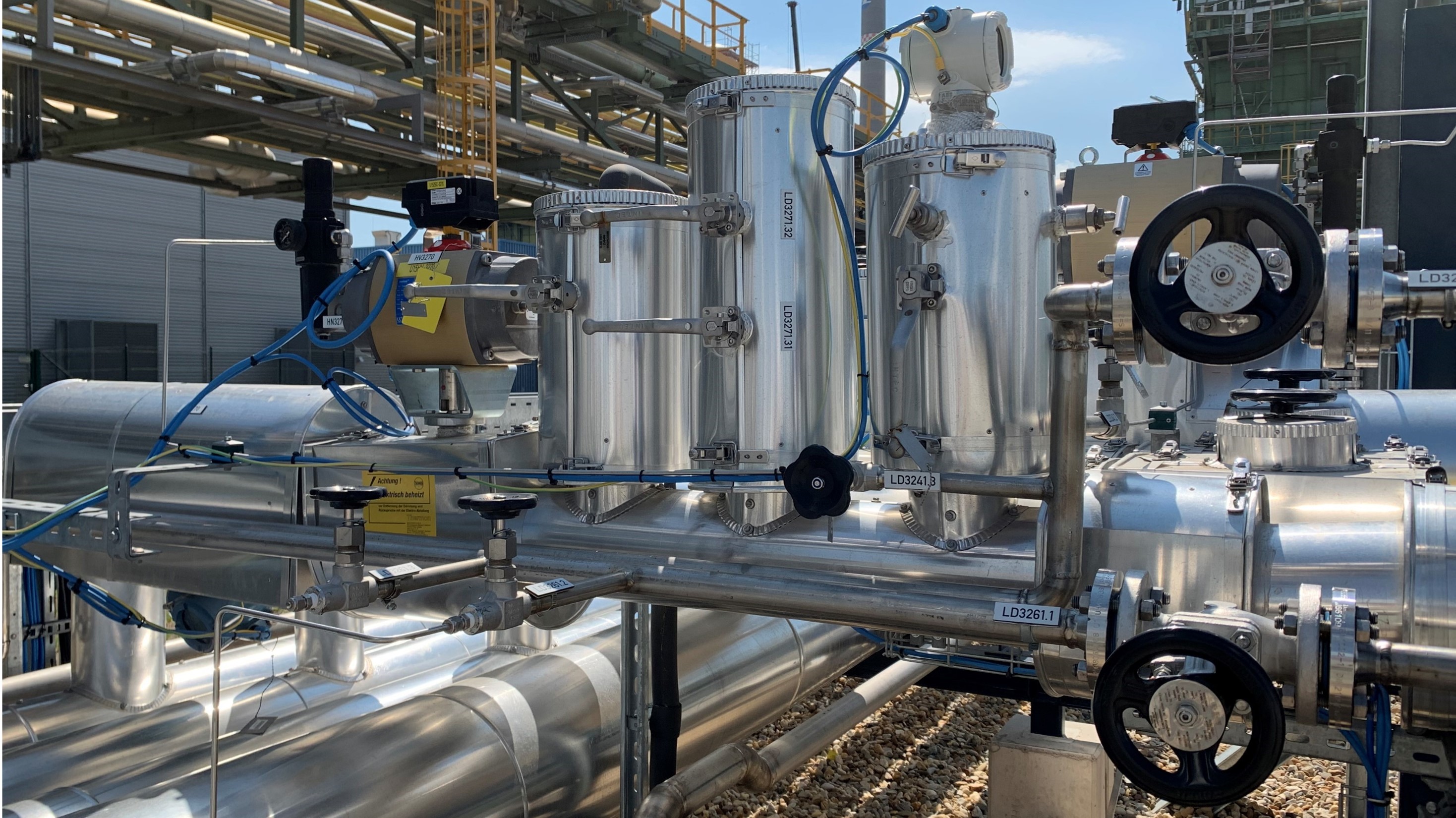
When using hydrogen, a fundamental distinction must be made between its use as an energy carrier and its material use. Hydrogen has been used as a material in the chemical industry for a long time, where its production is largely carried out with the aid of steam reformation using natural gas. In addition, technologies with a high technology readiness level (TRL) are being tested and investigated for material use in the steel industry to avoid high CO2 emissions connected with steel production. Its use as an energy carrier on a large scale is new. Mostly, the energy stored in hydrogen is used in the form of electricity by means of fuel cells. Use of the energy in the form of heat, either as waste heat from the fuel cell or by combustion, is also practiced.
Material use of hydrogen
As the starting point for numerous value chains, the chemical industry plays a key role in achieving climate neutrality for several sectors. Chemical processes in Germany alone generate a continuous hydrogen demand of more than 1.1 million t/a. Meeting this demand with green, rather than currently mostly gray, hydrogen alone is a major challenge. This demand will multiply through the conversion of chemical processes towards climate-neutrality. By 2050, demand is projected to be 7 times today's level. Over half of the annual hydrogen demand is for the synthesis of ammonia and methanol alone. At the end of the chemical process chains are products that can be found almost everywhere. Foodstuffs, in particular, are an important end product due to the use of chemically produced fertilizers, where hydrogen is at the very beginning of production. Other notable processes in which hydrogen is used as a material are the treatment of petroleum products (e.g. hydrocracking), the hardening of edible oils to fats, and reduction reactions. Among the reduction reactions, which can be decarbonized using hydrogen, steelmaking is particularly noteworthy.
Hydrogen is the most suitable alternative to replace the use of coal as a reducing agent and to provide the process heat for steel production in the blast furnace. The steel industry is one of the largest carbon emitters, which makes its conversion to climate-neutral processes worthwhile but also costly. The direct reduction of iron oxide with hydrogen in the blast furnace has already been tested in a pilot plant [2], but has not yet reached market maturity in technical and economic terms. The provision of green hydrogen is sometimes considered too expensive on the necessary scales.
Use of hydrogen as an energy carrier in fuel cells
Hydrogen fuel cells convert the energy in hydrogen into electricity and heat. Electricity generation using fuel cells can be more efficient than internal combustion engines, has a higher energy density than batteries and avoids local pollutant emissions. There is a wide variety of fuel cells available on the market, so that their range of applications extends from mobile power generation in multicopters to large-scale use in the power grid. The low-noise and low-maintenance devices generate climate-neutral electricity and heat, provided the hydrogen used is green.
The process of generating electricity using fuel cells is the reverse of electrolysis. A cell contains an anode and cathode separated by a semi-permeable membrane that separates hydrogen and air and conducts only ions. Hydrogen is oxidized at the anode, producing protons in the acidic, which migrate through the membrane to the cathode. In the alkaline, hydrogen is oxidized and reacts with hydroxide ions that have passed through the membrane to form water. In both cases electrons are produced, which serve an electrical load through the external circuit, and then participate in the reduction of oxygen at the cathode. The result is only energy (electrical and thermal) and water.
Use as fuel
Last, hydrogen is used as a fuel in rockets, internal combustion engines, and turbines. Much experience has been gained with its use as rocket fuel or in jet engines. Theoretically, all rotating machines, i.e. in particular gas turbines but also piston engines, can be operated with hydrogen gas. Regional gas networks for private consumption can be converted to hydrogen, or to a mixture of natural gas and hydrogen.
References:
- Neugebauer, Reimund (2022): Wasserstofftechnologien. Berlin, Heidelberg: Springer Berlin Heidelberg.
- https://group.vattenfall.com/press-and-media/pressreleases/2021/hybrit-ssab-lkab-and-vattenfall-first-in-the-world-with-hydrogen-reduced-sponge-iron, Vattenfall, 09.12.2022